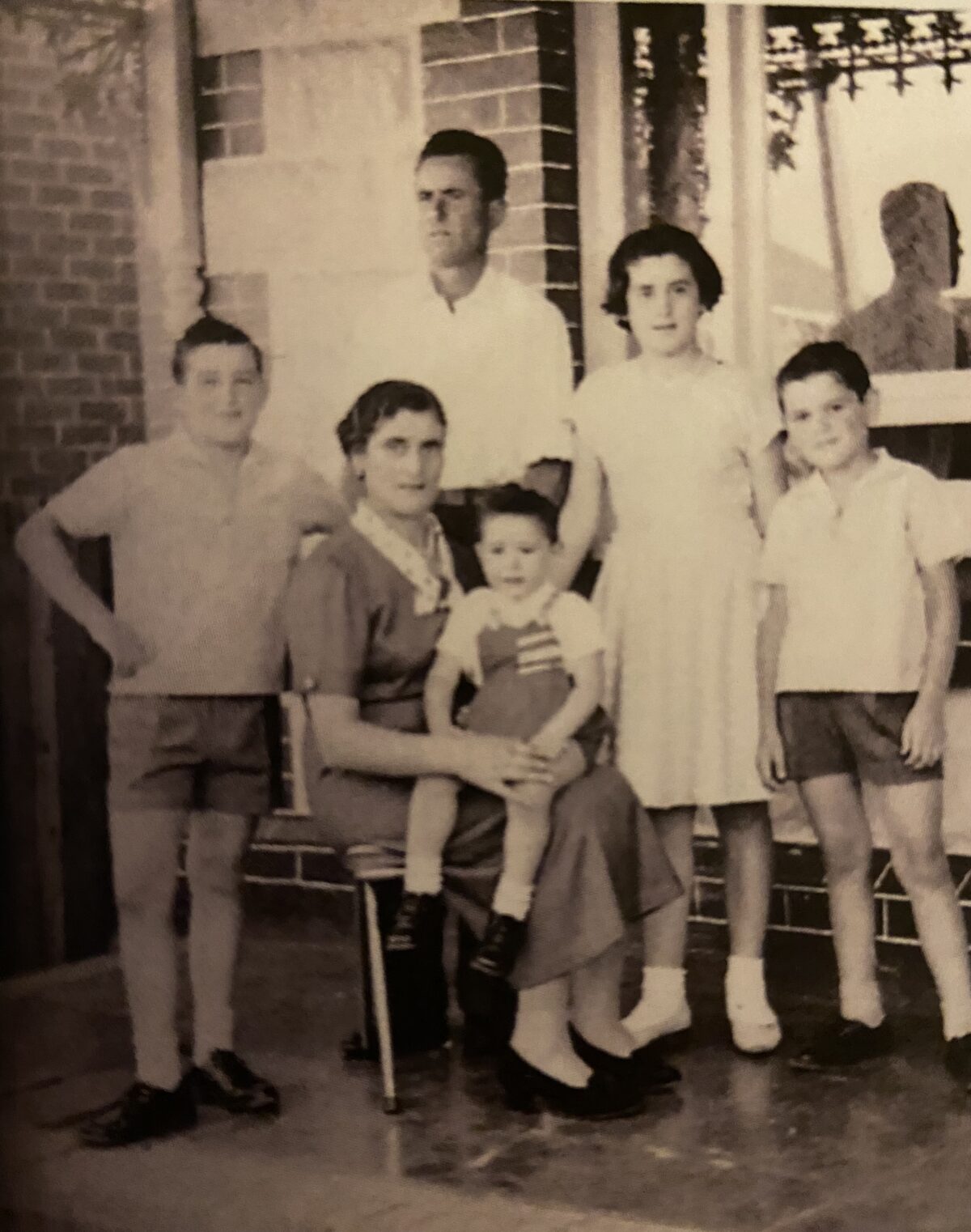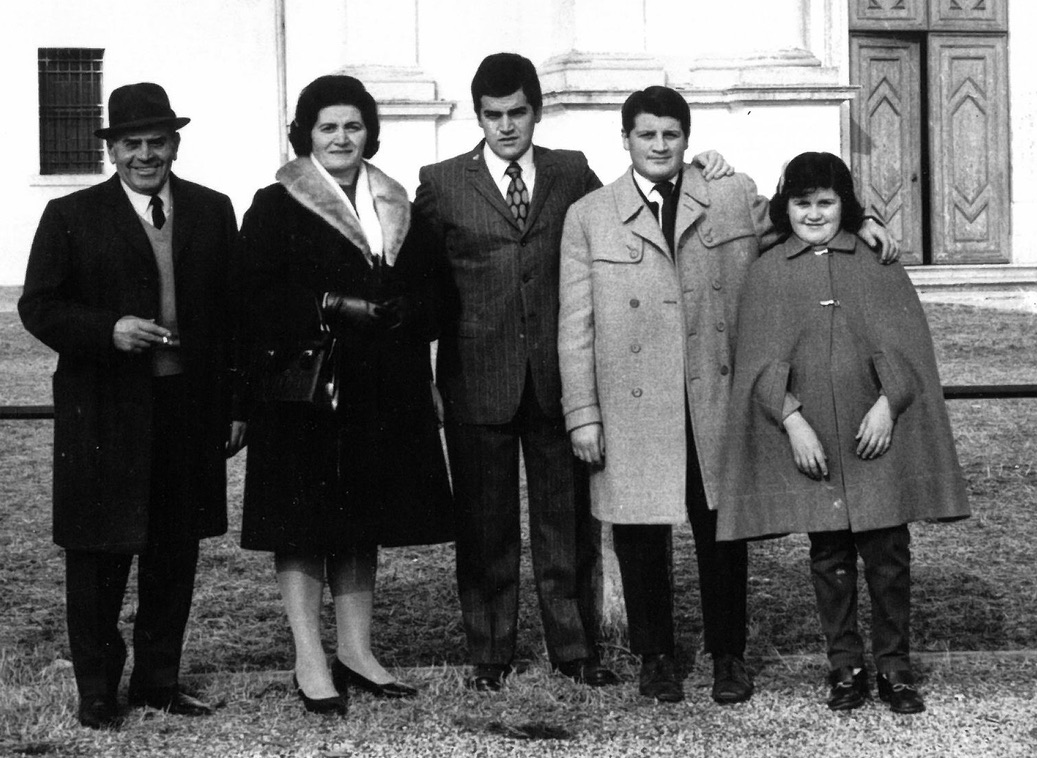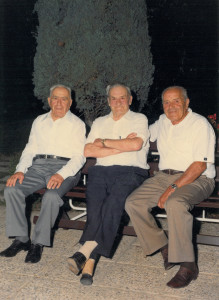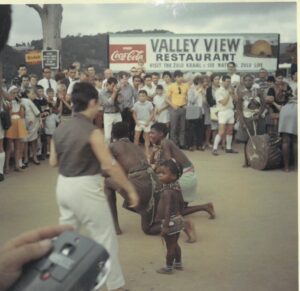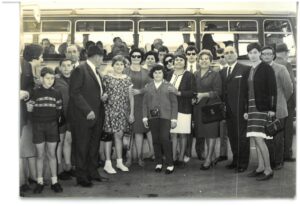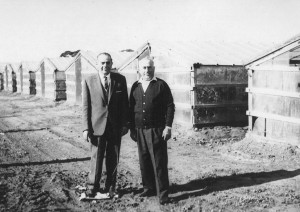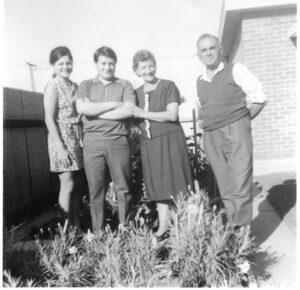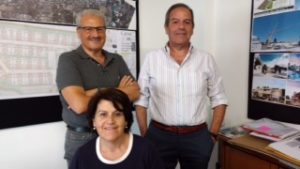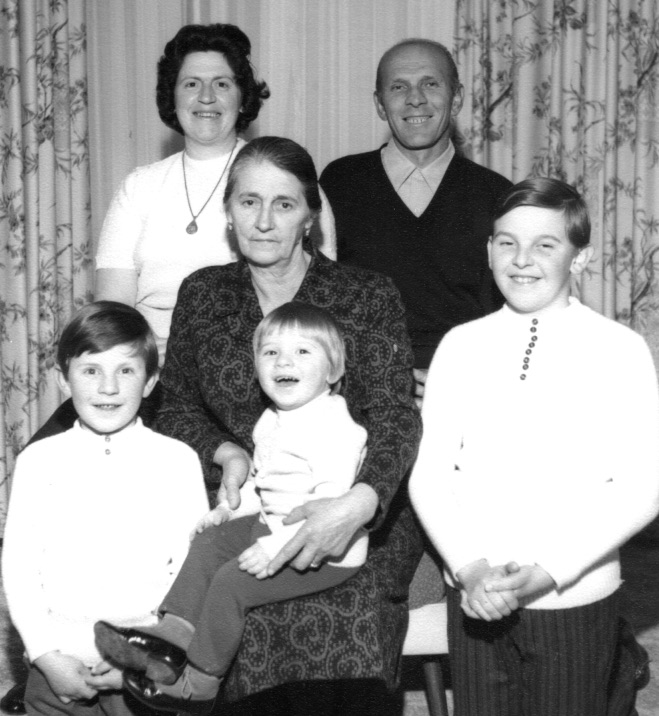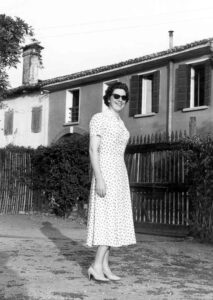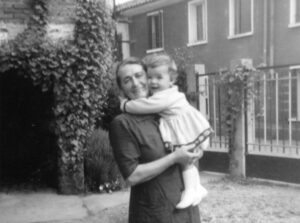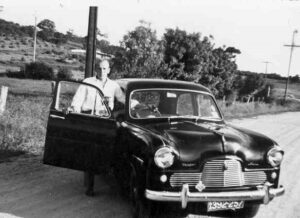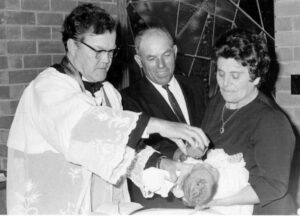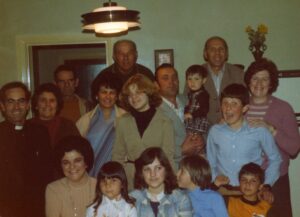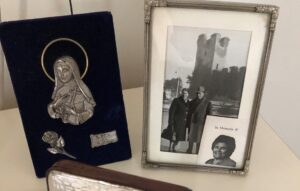Some years ago, I felt an urgent need to put together a brief history of our family before age dimmed what I had heard and what I remembered so that future generations would know something of their Veneto roots. With the help of three other members of the family we compiled a pictorial family book with some information of our family tree. The following is a short summary of what I wrote in our family book.
My two brothers and I are the last of the Rebellato family, of our branch at least, to have been born in Castelfranco Veneto. We have researched our family origins and were able to go back as far as 1720 with records showing that our ancestors were born in or around the Castelfranco Veneto area. My father Rino was born in 1913 and my mother Livia Guidolin (born in Salvarosa of Castelfranco) in 1919.
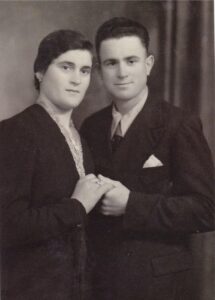
Although the fields they worked were adjoining, divided by a small creek only, our parents did not know each other until my father met my mother after a church service in her town. The war prolonged their engagement, which lasted 11 years, and they were able to marry at last in 1946.
Their wedding was a quiet and sad affair as the Rebellato family had lost 2 members in the war and one other returned home with a debilitating illness.
I was born in 1948, closely followed by two brothers – Ferruccio in 1950 and Pietro (Peter) in 1951. My place of birth was in the farmhouse in what has to be one of the most beautiful estates in the area – the Villa Bolasco Revedin.
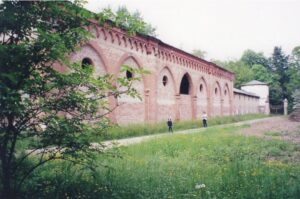
Our house, which was only a few hundred metres from the piazza Giorgione of the moated city of Castelfranco, was old with no running water, inside toilet, bathroom, indeed any comfort. But as our place was part of the estate owned by the Conte Bolasco we children had free rein to enjoy the the gardens and surrounding woods of the Villa.
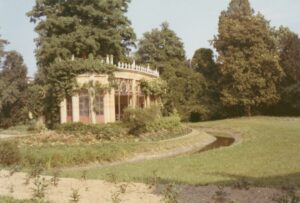
I do remember growing up and playing in the adjoining park, rolling down the verdant arena surrounded by many statues, dabbling with sticks in the small man-made lake, hiding in the boathouse, waltzing among the flowers in the fiorita (the beds of blooming flowers) and tip toeing through the classical conservatory of the villa. In spring, the park was a carpet of perfumed violets and our family was the one that carefully lifted and then loaded baskets of moss in December to take to the church of S. Maria della Pieve, for the base of the presepio, which was very grand, the whole town of Bethlehem in fact was set up, all lit with tiny lights and with moving figures etc and we children were wide-eyed with wonder.
My parents were share farmers and worked so very hard for very little. Nevertheless, they were content with their lot as they later learnt how to grow the most beautiful, prizewinning radicchio castellano (which was transported and even served in the finest restaurants of Vienna) and thus boost their income considerably. Unfortunately, no sooner were they able to lift their heads and agree that they were on to a good thing, the owner of the land sold the portion worked by my parents to the Comune of Castelfranco to build the new hospital.
We had to leave.
My father wanted to move to Lombardy, a hot spot for the industrialisation of post war Italy, and where some relatives of my mother had recently settled (and later became quite successful in the fields they had chosen). However, my mother was encouraged by her siblings, her eldest brother who had come to Australia in 1926, the second brother in 1939 and lastly her sister who had arrived in 1955, to migrate to Adelaide. They told us there was plenty of work here and the possibility of a good future for the children
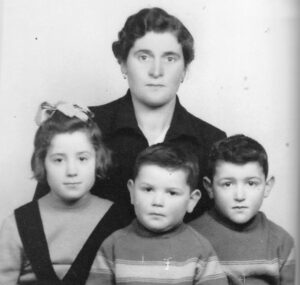
We left a very cold, snow covered Castelfranco on the 9.00 pm train bound for Genoa on 24th February 1956. What a sad parting! My beloved grandmother was distraught as were our other relatives. We never saw some of them again.
We sailed on the Fairsea and after an uneventful journey (despite the seasickness) arrived at Port Melbourne on Friday 23rd March and left by train the following night.
We were welcomed at the Adelaide railway Station on 25th March 1956 by my mother’s two brothers and sister and their families.
My parents’ first impression of Adelaide was that it was much smaller than they had envisaged and everything low lying and plain. Life was easier for them here with food plentiful and oh, the abundance and cheapness of sugar! This had been a luxury in Italy. We had as much as we wanted and it is a wonder we have reached our senior years with our own teeth!

We lived for a year at Norwood in the home of my mother’s younger brother, then my parents bought a maisonette at Mile End in which we lived for 5 years and where we welcomed the last born child, another boy, Enio, in 1957.
A large, comfortable home was bought in 1962 in Rose Street, Mile End to accommodate the now six-person family. We lived many happy, laughter filled years there. We attended the local Catholic schools and my father worked for the Adelaide City Council as a gardener. We grew, joined the workforce and made many friends. Our parents joined the Trevisani Association and our father played bocce at the Veneto Club every Sunday afternoon. They also enjoyed two wonderful trips back “home” to meet up with their dear ones.
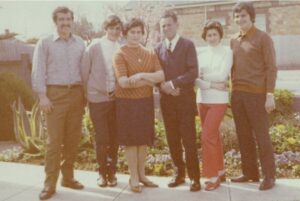
Although they never regretted their move, in their last years of life both our father and mother agreed that if they had their time over again they would not have left their country and kin. Indeed, conditions had improved so much in their homeland that there was no need to move elsewhere. As they aged and because they both had never mastered the English language, they sometimes felt excluded and in their infirmities, anxious, when unable to understand their medical providers.
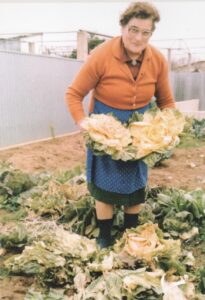
It was after we all married and left home that the parents made their final move – to Airdrie Avenue, Seaton “to be near the church and the Italian priests”.
Good health did not follow our dear father to this last residence. After 4 years of being practically bed-ridden he died in 1988.
Our mother, however, saw all her 9 grandchildren and the first two great-grandchildren and for the most part enjoyed good health. She died in 2012.
My brothers and I all live in the western suburbs with our spouses. Most of our children are married and so far, we have a combined total of 8 grandchildren.
WE HAVE BEEN BLESSED!
Anna Maria Rebellato. All photos supplied by Anna.
23 October 2022
